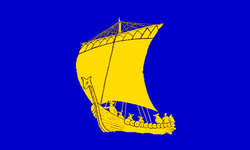The Thing Sites: A Norse - Celtic trail

A Thing or þing in Old Norse and Icelandic was the form of governing assembly found in the Scandinavian world that was also introduced into some Celtic societies. It is an assembly of the free men of a country or province and is located in specific sites identified for that purpose. At ‘the thing’, decisions were made and disputes settled. Although presided over by a king or chieftain in theory it was a democratic assembly in that each person had a vote. The decisions made were recited by the speaker to everyone at the thing. Probably the most famous thing site in existence today is the Manx Tynwald (Manx Gaelic: Tinvaal) said to be the oldest continuous parliament in the world. The name Tynwald is derived from the Old Norse word Þingvǫllr,meaning the field of the thing.

Thing associated sites and place names are located in Norway (Tingvoll), Sweden, Iceland (Þingvellir) and in the Faroe Islands (Tinganes). Then further south more such meeting places are found. This reflects the strong Norse influences that were spread by the Vikings through the northern and western islands of Scotland, parts of the Scottish mainland, then into the Irish Sea to the Isle of Man and Ireland from the 8th - 15th centuries. So as well as Tynwald on the Isle of Man we have Tingwall in Orkney and Shetland in which Tingaholm is also located. Dingwall in the Highlands of Scotland, Tinwald in Dumfries and Galloway in south-west Scotland and in Dublin there also used to be a site known as Thingmote that was used for the same purpose.


In 2014 in what is known as The Thing Trail, a converted Norwegian fishing boat, MS Nybakk Venner made a tour of various of the ‘Thing sites’. The vessel also housed an exhibition, provided by Orkney Museum to promote an understanding of the sites. The journey took them from Gulatinget in Norway visiting Orkney, Shetland, Isle of Man and various ports in Scotland. The Thing Trail is a European Union-funded three year project and highlights the historical links between Norway, Iceland, Faroes, Shetland, Orkney, Scotland and the Isle of Man. The aim of this enterprise is also to promote and develop the economic potential of some of the more remote communities located on the edge of north-west Europe. Next year the boat Nybakk Venner will embark on journeys to other thing sites in Iceland and the Faroes.
Further reading
Celts and Vikings - Scandinavian Influences on the Celtic Nations
- Pan-Celtic
- English
- Log in to post comments





